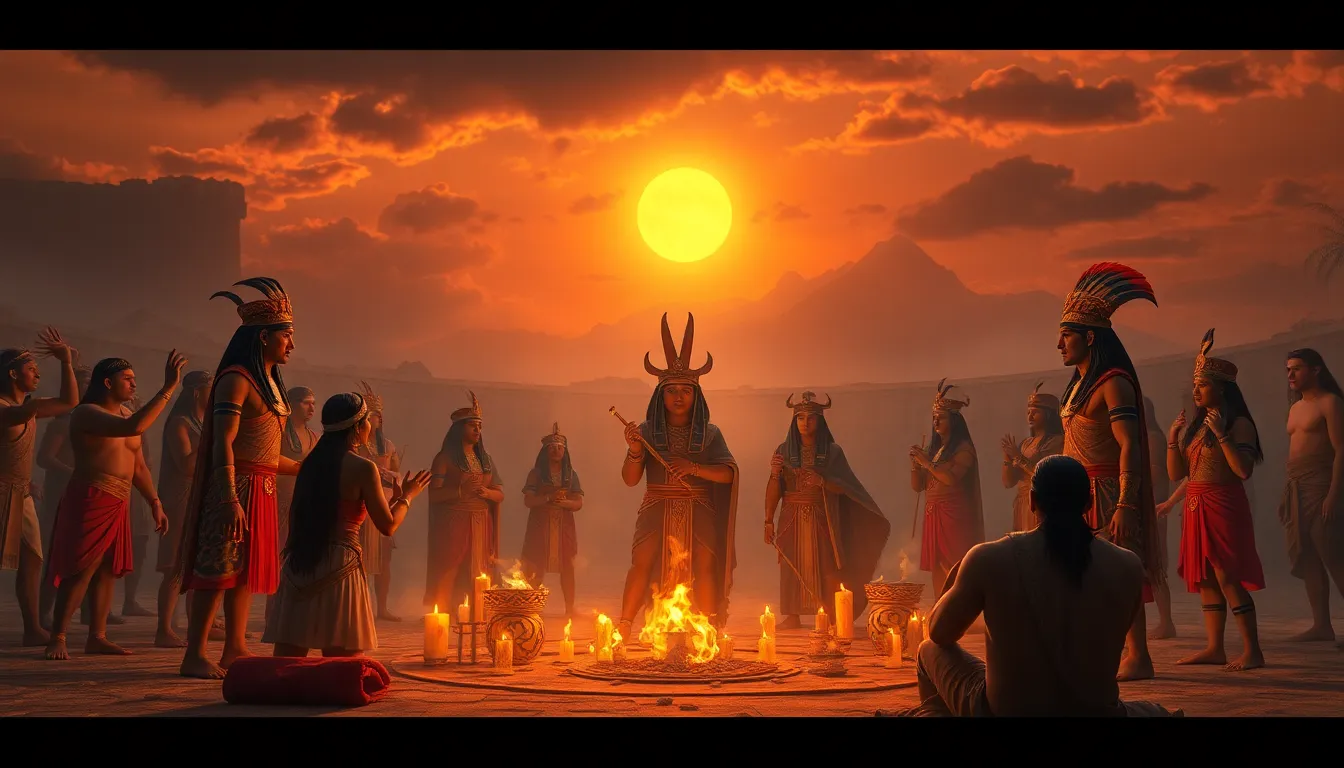The Rituals of the Festival of the Great Feast of the Gods
I. Introduction
The Festival of the Great Feast of the Gods is a significant event in ancient Egyptian culture, celebrated in honor of the deities who shaped the natural and spiritual worlds. This festival encapsulated the essence of Egyptian spirituality, intertwining community, agriculture, and religious devotion.
Throughout history, the festival served not only as a time of worship but also as a crucial cultural gathering, reinforcing social bonds and traditions. In this article, we will explore the historical background, preparations, rituals, and the festival’s enduring significance within the community.
II. Historical Background
The origins of the Festival of the Great Feast of the Gods can be traced back to the early dynastic periods of ancient Egypt. It was believed that the gods required sustenance and celebration, which formed the foundation of this annual observance.
Over the centuries, the festival evolved, adapting to changes in religious practices and cultural influences. Initially, the rituals were simple offerings of food and drink. However, as the civilization progressed, the festival grew more elaborate, incorporating music, dance, and theatrical performances.
Cultural influences from neighboring regions and the integration of various deities into the pantheon contributed to the festival’s rich tapestry. The celebration became a melting pot of traditions, drawing from diverse practices while remaining rooted in its original purpose.
III. Preparations for the Festival
Preparations for the Festival of the Great Feast of the Gods began weeks in advance, involving the entire community in an organized effort to ensure a successful celebration.
- Community involvement and organization: Local leaders and priests would convene to plan the festival’s events, delegating tasks to families and guilds responsible for different aspects of the celebration.
- Ritual cleansing and purification processes: In the days leading up to the festival, participants underwent purification rituals, which included bathing in sacred waters and donning clean garments to symbolize spiritual readiness.
- Gathering of offerings and special foods: Families would prepare and gather traditional foods, such as bread, fruits, and meats, to present as offerings to the gods, ensuring a bountiful blessing for the year ahead.
IV. Opening Ceremonies
The festival commenced with grand opening ceremonies, marked by traditional rituals to invoke the presence of the gods.
- Traditional rituals to commence the festival: The ceremonies often began at dawn with the lighting of sacred fires and the offering of incense to the deities.
- Role of priests and spiritual leaders: Priests, adorned in ceremonial attire, led the rituals, reciting hymns and prayers, channeling the community’s devotion to the gods.
- Symbolic acts to honor the gods: One of the key symbolic acts included the presentation of a ceremonial feast, which represented the community’s gratitude and the hope for divine favor.
V. Daily Rituals and Activities
Throughout the festival, daily rituals were performed, creating a rhythm of worship and celebration that engaged the community.
- Description of daily practices throughout the festival: Each day featured specific rituals dedicated to different gods, with offerings and prayers tailored to their unique attributes.
- Special performances, dances, and music: The festival was filled with performances that celebrated the mythology of the gods, featuring dancers and musicians who brought the stories to life.
- Community feasting and its significance: Each evening concluded with communal feasting, reinforcing social ties and emphasizing the importance of unity and shared blessings.
VI. Symbolism of Offerings
Offerings played a central role in the Festival of the Great Feast of the Gods, serving as a medium between the divine and the earthly realm.
- Types of offerings made to the gods: Offerings varied from simple bread and wine to elaborate dishes prepared with great care, symbolizing the community’s devotion and respect.
- Interpretation of symbols and their meanings: Each offering carried its own significance; for instance, bread symbolized sustenance, while wine represented joy and celebration.
- Importance of gratitude and reciprocity in rituals: The act of giving was not merely a duty but an expression of gratitude, acknowledging the blessings received from the gods throughout the year.
VII. Conclusion of the Festival
The conclusion of the festival was marked by profound rituals that encapsulated the essence of the celebration.
- Closing rituals and their significance: The final ceremonies often included a communal prayer, thanking the gods and seeking continued blessings.
- Reflection on the festival’s impact on the community: The festival reinforced cultural identities and fostered a sense of belonging among participants, creating memories that would last a lifetime.
- Final thoughts on the continuation of traditions: As the festival concluded, participants would commit to carrying the lessons learned and the spirit of unity into their daily lives.
VIII. Future of the Festival
In modern times, the Festival of the Great Feast of the Gods faces various challenges but also opportunities for revitalization.
- Challenges facing the festival in modern times: Urbanization, globalization, and changing cultural practices threaten the traditional observance of the festival.
- Efforts to preserve and adapt rituals: Communities are working to adapt the rituals, incorporating modern elements while honoring the ancient traditions.
- The role of younger generations in keeping traditions alive: Engaging youth in the planning and execution of the festival is crucial for ensuring its relevance and continuation in the future.




